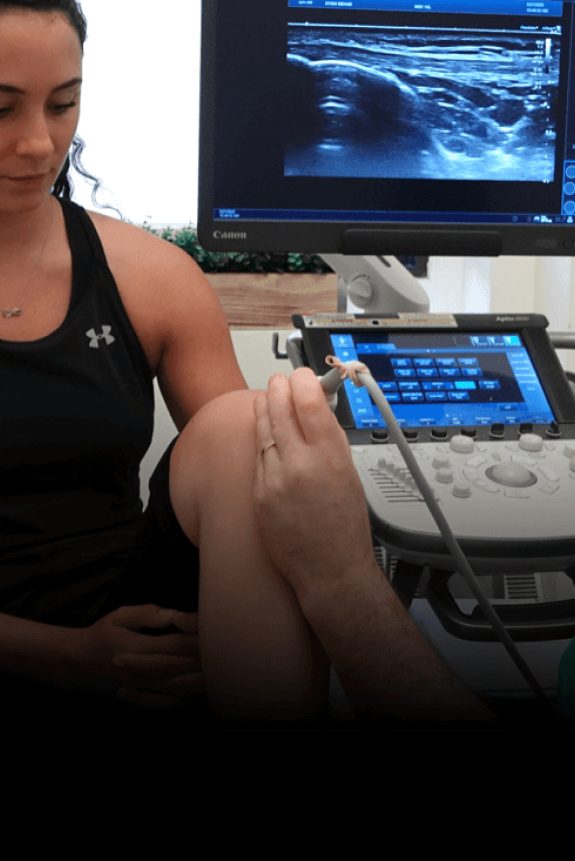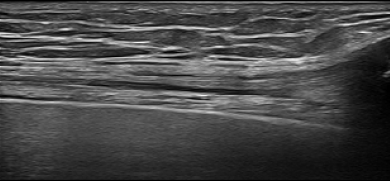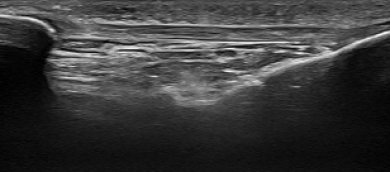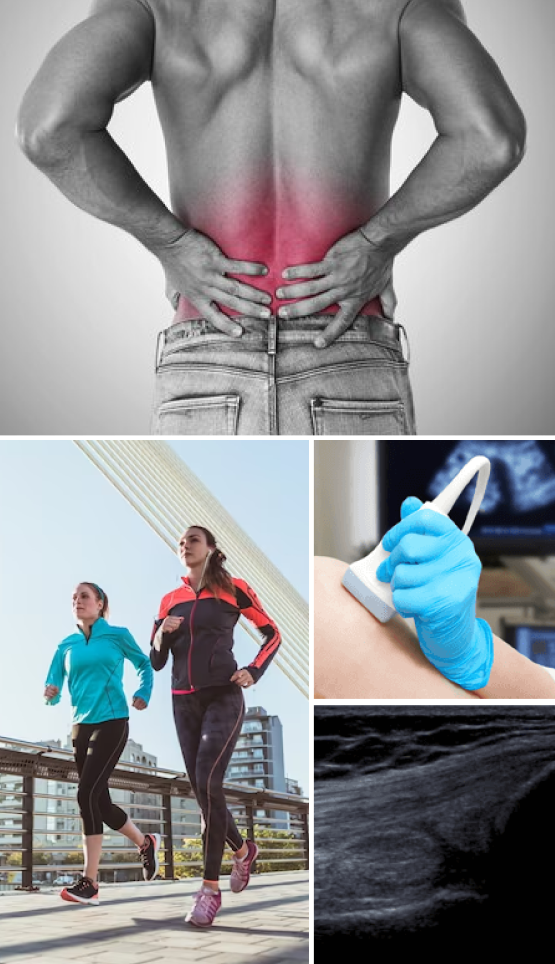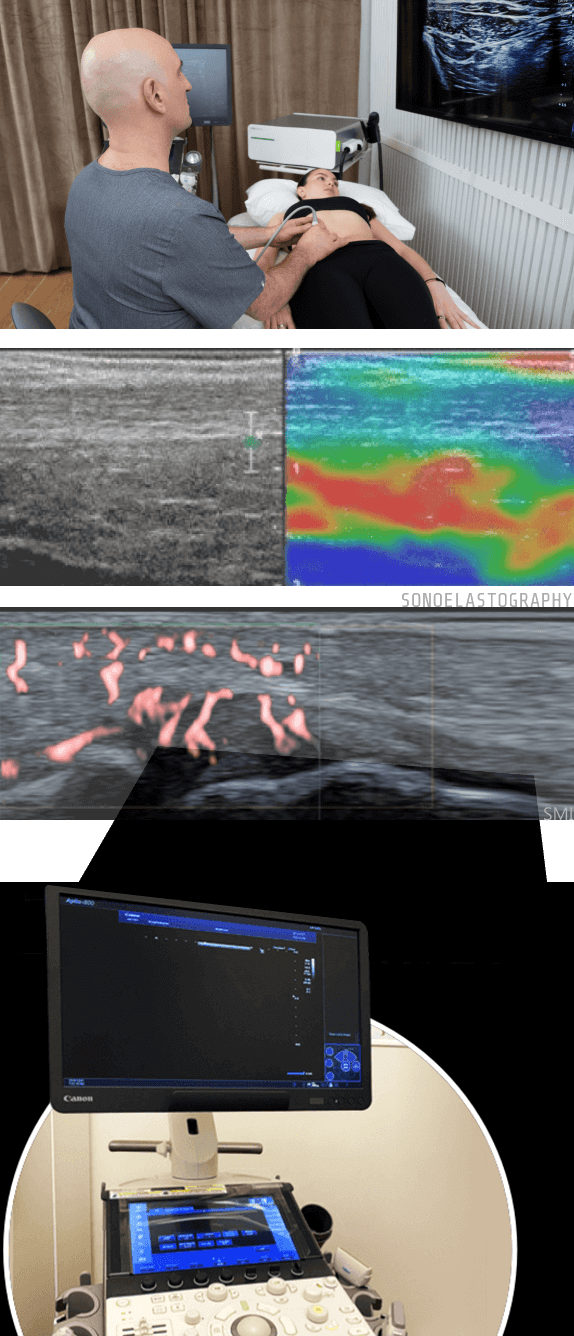How Does Msk Ultrasound Work?
During a RUSI session, a water-based gel is applied to the area being examined. A small transducer, or probe, is placed directly on the skin and transmits high-frequency sound waves through the gel into the body’s tissues. Sound waves are then reflected off the tissues. Because different tissues have different densities, the sound waves reflect back at various rates, making it possible to distinguish one type of tissue from another.
The transducer collects the sounds that bounce back, and a computer then creates images that are displayed on a screen. Because ultrasound images are captured in real-time, they can show the structure and movement of the body’s muscles, joints, internal organs, and even blood flowing through blood vessels.
Using RUSI, your therapist is able to observe the movements of your muscles as they occur and determine whether they are functioning correctly. The therapist can observe different layers of muscles contracting and relaxing, can look at the timing and size of muscle contractions, and can even see fatty tissue within your muscles.
RUSI is used in conjunction with an integrated total body assessment to diagnose muscle dysfunction. Feedback from RUSI can then be used to retrain muscles to perform optimal contractions. Images of a normal functional contraction can be compared to a patient’s dysfunctional muscle contraction so they are better able to understand the deficiency and how to correct it.



